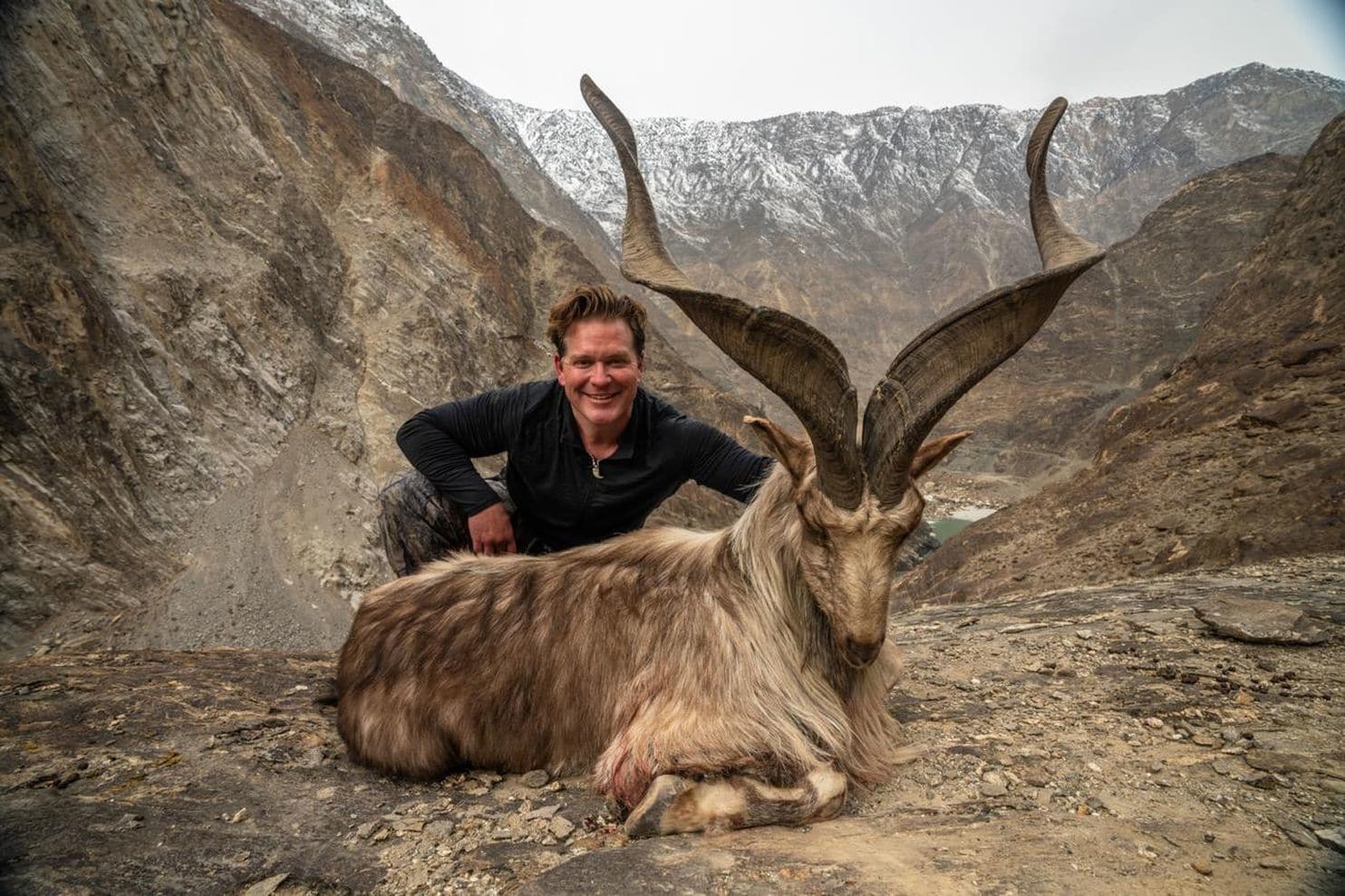An American trophy hunter is receiving heat for a recent
expedition to Pakistan’s northern Himalayan region of Gilgit-Baltistan. Bryan
Kinsel Harlan, from Texas, reportedly paid $110,000 to hunt and kill a rare
mountain goat. In the photo below, he proudly kneels beside the kill.
“It was an easy and close shot,” Mr Harlan told the Pakistani press. “I am
pleased to take this trophy.”
Harlan is the third American to travel to Pakistan and kill
a markhor goat. The wild animal is considered to be endangered. In 2011, there
were only about 2,500 markhor goats in the region. Over the past several years,
the population has dwindled immensely, largely due to deforestation, military
activities, local poaching, and unregulated trophy hunting.
The image prompted outrage on social media. For the most
part, people are angered by the lack of laws banning or regulating hunting.
Despite the fierce backlash, Harlan remains proud of his adventure.
The video footage of Harlan’s hunting expedition shows him
climbing a cliff. He then shoots a male markhor which was sitting next to a
young goat.
In the next video, Harlan expressed his gratitude for being “welcomed
with open arms.” He called Pakistan a safe destination for tourists and
recommended it to American travelers. “This is a perfect example of hunters and
villagers coming together for a common goal of game conservation,” said the
hunter.
To prevent the markhor goat from going extinct, Pakistan has
allocated five sanctuaries in India for the rare mountain goats to roam freely
and breed. Authorities in the country also allow hunters — like Mr. Harlan —
who have paid large amounts of money, to hunt markhor goats in the region. They
claim the effort will protect the endangered species from potential extinction.
The Independent reports that about 80 percent of the profits
from trophy hunters are reportedly given to “isolated residents” who live in
the goats’ habitat. The other 20 percent is allocated to the government
wildlife agencies.

Comments
Post a Comment